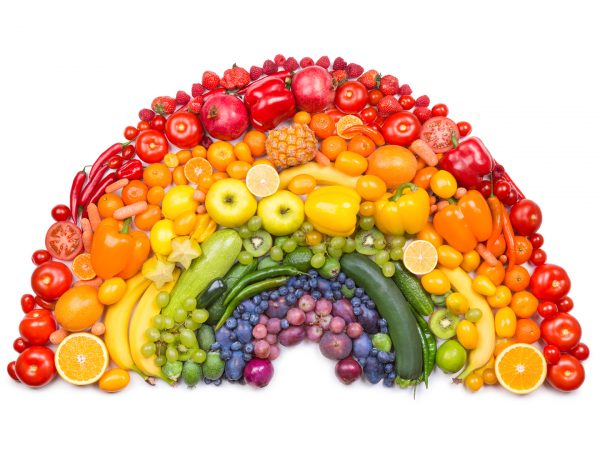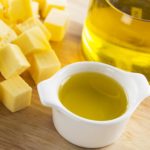Choosing Foods By Color?
I’ve heard that we should have a mix of foods of various colors on our plates. Can you give me an idea of the specific benefits of the different colors? How many fruits and vegetables do you recommend per meal?
Andrew Weil, M.D. | November 23, 2012

The vibrant colors of fruits and vegetables aren’t just visually appealing; they are also indicators of abundant protective nutrients. You’ll likely have a healthier diet if you use color as your guide in choosing fruits and vegetables. And while there’s nothing wrong with eating a lot of green vegetables, research has suggested that the wider the variety of natural colors you have on your plate or in your daily diet, the better your nutritional needs will be met.
Fresh produce forms the base of the pyramid of my anti-inflammatory diet. If you follow this eating plan, you’ll get plenty of vegetables – four to five servings per day, both raw and cooked, from all parts of the color spectrum. I also recommend three to four daily servings of fruit, fresh when in season or frozen at other times of the year. When possible, make sure that the fruits and vegetables in your diet are organically grown.
Here’s a rundown on specific food colors and how they benefit your health:
- Green: A great source of vitamins (including folate, one of the B vitamins) green vegetables also provide minerals and fiber. Some – including spinach, collards, kale and broccoli – contain lutein and zeaxanthin, compounds from a group of antioxidants known as carotenoids that can protect aging eyes from developing cataracts and macular degeneration. They may also help protect against blockages of the carotid arteries in the neck. Cruciferous vegetables such as broccoli, cabbage, Brussels sprouts, and kale contain antioxidants and other phytonutrients that help reduce cancer risk. Along with bok choy and collard greens they are good sources of the calcium we need for strong bones. You’ll get the most benefits from vegetables by cooking them lightly.
- Oranges/Yellows: Sweet potatoes, carrots, mangoes, apricots and other yellow or orange fruits and vegetables are also rich in carotenoids and other antioxidants that protect the body from oxidative stress. Orange fruits and vegetables also give you vitamin C and folate, needed to reduce the risk of heart disease and prevent certain birth defects.
- Reds: Tomatoes, watermelon, papaya, and pink grapefruit are among the red pigmented fruits and vegetables that contain lycopene. This powerful antioxidant helps prevent the development of heart disease and some types of cancer, particularly prostate cancer. The lycopene in tomatoes is more available to the body when you cook them, especially in a little olive oil.
- Blues/Purples: The deep colors in blueberries, purple grapes, red cabbage, beets, and plums come from anthocyanins, phytocompounds that protect against carcinogens and may help prevent heart disease. Blueberries are especially potent: a half cup provides antioxidant activity equivalent to five servings of peas, carrots, apples, squash or broccoli. Blueberries also give you almost three grams of fiber per half-cup serving.
- Whites: Garlic and onions contain allicin, a phytochemical that may help lower cholesterol and blood pressure. Raw garlic is a potent antibiotic that is especially active against fungal infections. It has immune-stimulating properties as well as antibacterial and antiviral effects. Other phytochemicals – polyphenols – found in pears and green grapes, may reduce the risk of some types of cancer.
To learn more about this subject I recommend reading What Color Is Your Diet? by David Heber, M.D., Ph.D., available in paperback from HarperCollins.
Andrew Weil, M.D.










